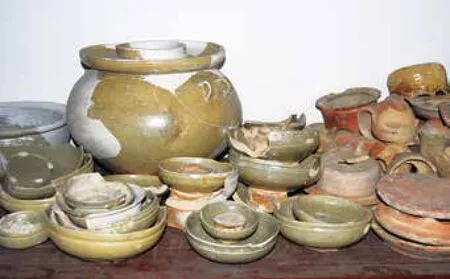Shangyu Celadon Attracts International Attention
By Yu Qiongyuan, Feng Yuan
Shangyu Celadon Attracts International Attention
By Yu Qiongyuan, Feng Yuan
An international ceramics center has recently started operating in Shangyu, now a district of Shaoxing City in eastern Zhejiang Province. The center is a public-interest academic institution jointly sponsored and operated by the Shangyu District Government and the Ceramics Institute with the Art School of Qinghua University.
The center has workshops, showrooms where semi-finished ceramics and masterpieces from a fine collection are on display. The workshops are fully equipped with modern machines and kilns.
Bai Ming, dean of the Ceramics Department of the Art School of Qinghua University, serves as the director of the center. He says that two top-class international ceramic artists have come to work at the center. In 2016, ten plus more ceramic artists are set to start their work at the center.
International artists are engaged for a reason. “We are used to and confined to our own traditional understanding of celadon. The western people have a different view of celadon. Hopefully, international artists can visit the center and take a look at the ceramics of Shangyu. The porcelain, the clay, the tradition, and the form, suggest a rich and long history and culture,” says the director.
The center also doubles as a base for members of the ceramics committee under the China Artists Association and for students from the ceramics department.

专家学者留影上虞青·现代国际陶艺中心。Experts and scholars pose for a photo at Shangyu International Ceramics Center.
Ceramics goes back to about 2,000 years in Shangyu. In 1974, some green-glazed ceramics made in the middle years or the later years of the Eastern Han (25-220AD) were unearthed at Xiaoxiantan kiln site in Shangyu. The pieces are universally recognized as mature ceramic products. In 2004, the nearby Dayuanping site was archaeologically explored and the studies further confirm that the middle and lower reaches of the Cao'e River that traverses Shangyu were where a full-fledged porcelain making industry operated in ancient times.
New evidence has emerged. Archaeologists discovered the Jinshan Site in a valley near Xiaowu Village, Shangpu Town, Shangyu, in 2013. The archaeological find was included in the Top Ten Archaeological Discoveries of China 2014. The site measures 800 square meters and there are 5 kilns. Three of them are traditionally called dragon kilns, named after their long and narrow shapes stretching up slopes. The three dragon kilns are preserved relatively well. Doctor Zheng Jianming, a researcher with Zhejiang Archaeological Institute, concludes that the site represents a complete ceramics firing process during the Eastern Han, the Three Kingdoms and the Western Jin, covering a historical period from the first century to fourth century. In the archaeological excavation of early celadon sites, the Jinshan Site is the only one that contains kilns built in different historical periods.

从禁山古窑址发掘出来的部分青瓷残件Some celadon shards excavated from the Jinshan Ancient Kiln Site
Despite its proximity to Xiaoxiantan and Dayuanping, the Jinshan Site represents a new type of celadon.
Part of the village administration building now serves as a workshop for the ongoing archaeological work. In a large room on the second floor are large plastic baskets that contain ceramic shards unearthed from the site. On the shelves are some ceramic pieces restored with the shards.
Shangpu Town alone has about 200 ancient kiln sites, most of which can be dated back to the Three Kingdoms (220-280) and the Western Jin (265-316).
Shangyu Museum is a living testimonial to the local ancient ceramic glory. The ceramic collection has more than 10,000 artifacts including some ceramic pieces and tools unearthed at the Jinshan Site. The quality exhibits from the Jinshan Site display 30 varieties in shapes and purposes and well developed techniques.
Dr. Zheng Jianming says that the Marine Silk Road was actually the Marine Ceramic Road in terms of export quantities. Studies of celadon will provide material for studies of the Marine Silk Road.
The Shangyu Government says that a property development project has been canceled and that Jinshan Site is now preserved and a park will be built there. Two celadon sites in Zhejiang are now on a preliminary list for applying for world heritage inscription. The Jinshan Site provides solid material for the preparatory work for the application.
- 文化交流的其它文章
- 展现浙江文化繁荣的绚丽画卷——文化大省建设篇
- A Review of the 30 Years of Cultural Dialogue
- 搭建 金桥三十年——中外文化交流篇
- Writing New Chapters for Cultural Prosperity and Playing New Symphony for International Exchanges -In Commemoration of the 30 Years of Cultural Dialogue
- Lu Yanshao: Master of Traditional Chinese Landscape
- Great Achievements

